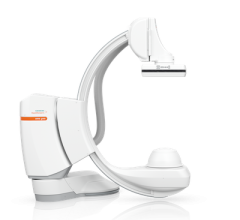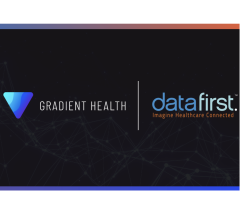
Matthew Brady, M.D.
Matthew Brady, M.D., a radiologist at Roper Radiologists PA in Charleston, S.C., addresses the often-interwoven topics of productivity and radiologist burnout succinctly when he says, “The loss of control over your workday is a problem for any physician no matter what your specialty.” His practice of 25 radiologists faced this challenge and others common to practices: Managing size growth, volume growth, multiple physical locations and distribution of their daily work.
To gain control, radiologists at Roper turned first to the traditional filtering capabilities of their PACS worklist, but soon realized this approach was limited by the inherent logic. “The downside is that you are only looking at a certain subset of cases, with no visibility of urgent cases on others’ lists,” he said. Another constraint they uncovered was the lack of analytics available from a typical PACS worklist, which limited their ability to make data-driven adjustments as their workflow changed over time.
Eventually, the practice reconsidered the concept of diagnostic viewing as separate from workflow management, and searched for a different kind of solution. An interactive, dynamic worklist that would let them orchestrate and measure their workflow.
They selected Workflow Intelligence from Change Healthcare. The flexible rules engine gives practices the sophisticated intelligence they need in a complex reading environment. It assigns each study a numbered priority, and based on that priority, assigns studies to the most appropriate, available resource. It’s dynamic, and will continue to reprioritize and escalate studies until they’re complete. All the data is time-stamped and tracked so administrators can analyze it to see what’s working and what could be improved.
The solution went live in July 2017, in a process that Brady describes as “structured, comprehensive and smooth,” and Roper started seeing improved efficiency almost immediately.
While emergency room (ER) cases were always considered the most urgent, even before implementing Workflow Intelligence, these cases were managed by everyone across the practice. But the solution’s prioritization and assignment features allowed them to attack their work differently, and assign dedicated radiologists to ER studies. When Roper measured the turnaround time of ER cases in the 95th percentile — cases that used to be outliers — they noted a 17-minute improvement. Brady reiterated, “You can demonstrate that while the large majority of our ER turnarounds are extremely short, and the tails don’t look like a big deal — those are real patients sitting around in ERs waiting for cases to come back.”
This reorganization led to further, unexpected improvements. Radiologists assigned to other chairs could focus their attention entirely on inpatient and ICU cases. “We didn’t really think about that,” said Brady, “But we saw dramatic drops in our 80th and 90th percentile tails for routine ICU and inpatient work.” The “drops” he refers to were turnaround time improvements of more than 75 minutes for cases in the 95th percentile. For patients in the ICU, this statistic has real clinical impact, and in Brady’s mind, it’s a clear advantage. Being able to differentiate ICU patients from other inpatients is crucial to patient care. Roper also improved overall efficiency. Brady noted that radiologists seemed to be leaving earlier, and the data proved him correct. When they calculated the amount of time radiologists worked after hours, they noted a 26 percent improvement.
The qualitative benefits are evident as well. “I think there’s a palpable sense of relief. Previously, you had the ER in the back of your head all the time, and now you don’t. It makes your whole workday a lot more sane,” Brady said. And radiologists aren’t the only employees of the practice who enjoy benefits. Before Workflow Intelligence, managing worklists and filters on an individual profile level was “an IT thicket.” But now, administrators “can change one of our lists in 30 seconds and it is propagated to everyone. Period.”
Brady expects Workflow Intelligence will continue delivering benefits as they uncover new ways to analyze and use data from the solution. His goal is to facilitate evidence-based decisions for the practice through ongoing analysis and review. “We’ll have insight over time into our business,” he said. “For example, we can make strategic staffing and/or hiring decisions based on data we can get out of a product like this one.”
The greatest benefit, he said, is the freedom workflow orchestration provides for the practice. “We could achieve these results because we weren’t constrained by the filters and choices we were previously accustomed to. We created study groupings and leveraged them to break up our work,” he said. Once you do that, you can “carve up the work so there’s accountability and the right level of attention to high clinical priority cases. That one-two punch is really powerful.”
Case study supplied by Change Healthcare


 December 09, 2025
December 09, 2025 









